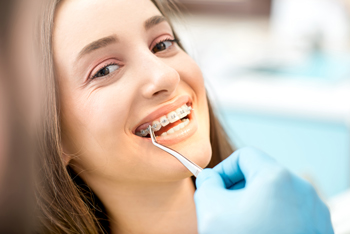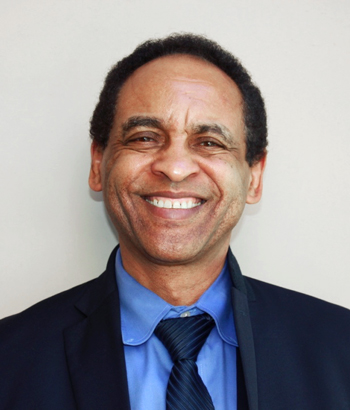By Laura Thill
Amid growing options for orthodontic treatment, orthodontists continue to offer patients their unique expertise.
 A beautiful smile can do wonders for our self-esteem, particularly when our photo is plastered across Facebook and Instagram. And patients today have more options for improving their smile than ever before – from ordering aligners online to seeking treatment from a general dentist. That said, some dental professionals believe there are advantages to working with an orthodontist.
A beautiful smile can do wonders for our self-esteem, particularly when our photo is plastered across Facebook and Instagram. And patients today have more options for improving their smile than ever before – from ordering aligners online to seeking treatment from a general dentist. That said, some dental professionals believe there are advantages to working with an orthodontist.
For one, orthodontists bring additional training – usually between two and three years of specialized academic and clinical training – to the operatory, compared to general dentists. “This equips the specialist to treat a wide range of orthodontic patients utilizing the appropriate methods,” says Rasheed Khalifa, DDS, an orthodontist based in Manteca, Calif. “Most importantly, the specialist’s knowledge of human growth and development helps the specialist arrive at the correct diagnosis of the orthodontic problems, leading to better treatment results.

“Addressing an improper bite or malocclusion in its various manifestations is the most common reason I treat orthodontic patients,” Khalifa says. “Common examples of improper bite are excessive overjet (often referred to as over-bite or buck teeth) under-bite, anterior deep-bite, anterior open-bite, individual tooth or teeth cross-bite, rotated teeth, spaced or crowded teeth.”
Although he typically recommends fixed metal braces for teenagers and ceramic fixed braces for adults, in some cases, patients can be fitted with clear aligners. But this isn’t the best option for every patient, he adds. “While clear aligners have made orthodontic treatment appealing to teen and adult patients who are not comfortable wearing braces, in some cases, they may not be the right choice for the correction they require.”
In fact, for some extreme cases, even traditional treatment with fixed braces will not suffice. For instance, to treat jaw abnormalities in growing children, Khalifa modifies their growth pattern utilizing myofunctional removable appliances. Gross skeletal jaw abnormalities in non-growing patients may require orthognathic surgical correction, such as orthodontics combined with jaw surgery, he says. Thanks to technological advances like digital X-ray and scanners and 3D printers, orthodontists can provide more accurate diagnoses and efficient treatment. And the incorporation of nickel/titanium alloy in arch wires and coil springs has nearly eliminated the need for pulling teeth in patients with crowded or underdeveloped jaws, he says.
A day’s work
On a typical day, Khalifa sees between 30 and 40 patients, either to place braces, make necessary adjustments, remove orthodontic appliances or check bite stability on patients already in retention. “The majority of these patients require adjustments, such as activating their orthodontic appliances by bending or changing arch wires and/or changing their elastomers,” he explains.
It’s common for a patient to schedule an emergency visit because an arch wire is poking his or her gums and must be cut flush. But, the day after Halloween traditionally is one of the busiest days of the year for emergency calls, according to Khalifa. Indeed, sticky, chewy or hard treats can play havoc on orthodontic appliances. “We promote the American Association of Orthodontists’ Orthodontic Health Month recommendations and post braces-friendly tips on social media, but we still end up with calls regarding broken braces and wires,” he says.
Emergencies aside, however, some patients simply are less motivated than others when it comes to complying with treatment, Khalifa says. Teens sometimes require regular encouragement to wear their removable elastics or maintain good oral hygiene, he says. “We talk to them and sometimes offer reward programs. In fact, we’ve improved compliance by offering patients points toward a monthly movie ticket drawing.”
That said, patients generally do what it takes to get the best possible results. “I emphasize to patients that straight teeth are easier to clean and lead to lifelong better oral and overall health,” says Khalifa. “From the patients’ perspective, they are very aware of the need for orthodontic treatment when their teeth are crooked, obviously spaced or they have a gross over or underbite. And social factors like social media and selfies have made the public even more conscious of their smiles.”
Greater competition
As more general dentists have added orthodontics at their practice, and patients have more options for treatment, orthodontists must work harder to market their services, according to Khalifa. “In order to remain competitive, orthodontists must market their practice heavily,” he says. “This can be accomplished the traditional way, by establishing good rapport with the referring general dentists. But I also recommend in-house marketing by the whole staff, which should reflect the desired image of the practice. This may include programs that keep patients and their families engaged with the office and the treatment, as well as community involvement.
“In this era of the patient experience, it’s especially important that orthodontic practices take full advantage of online and social media to reach their market niche, as well as offer contests and rewards to engage young patients and their families,” says Khalifa. Bottom line, he explains, orthodontists want to see patients benefit from an improved smile, facial appearance and oral health, and inevitably, better self-esteem.





